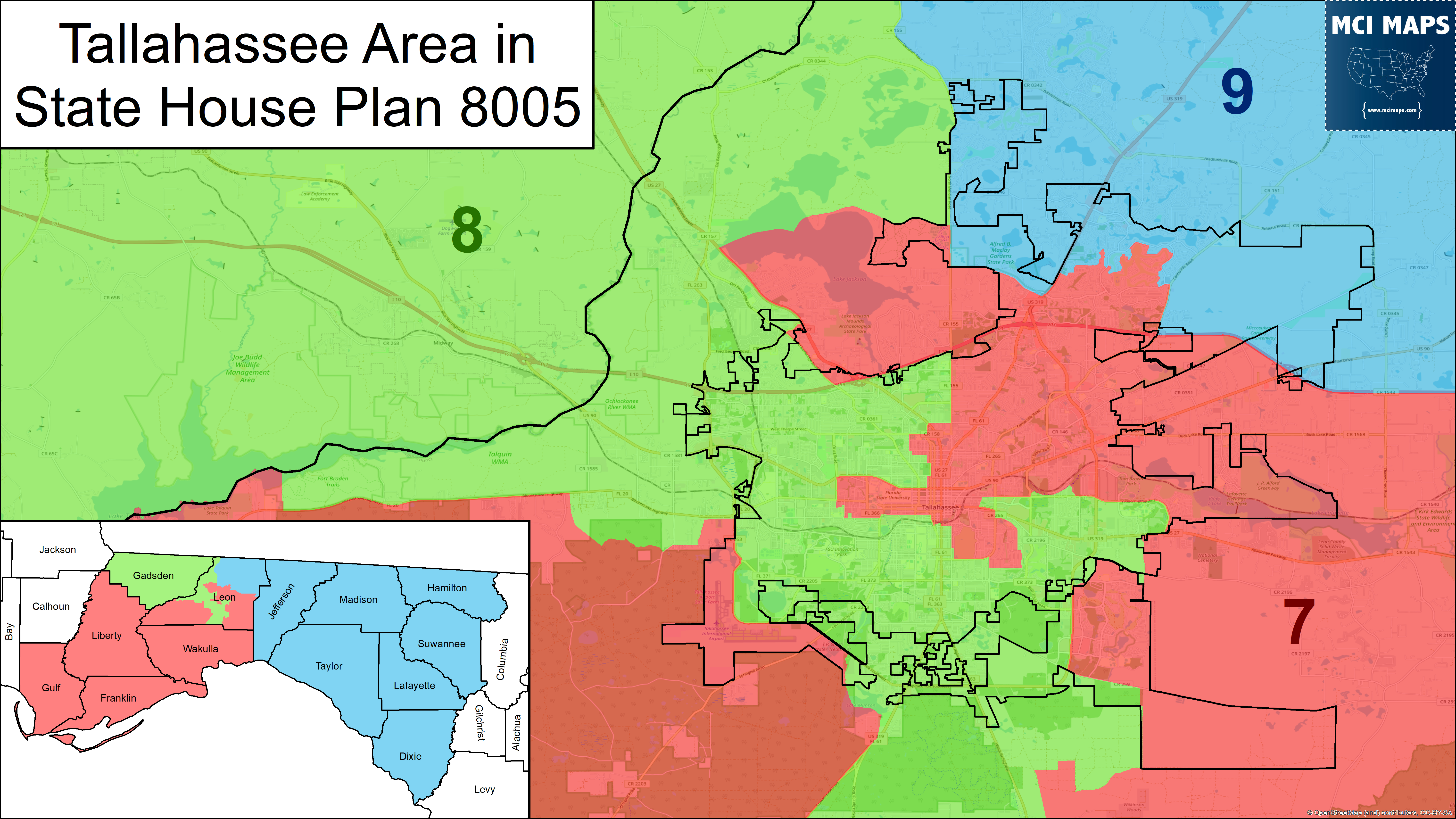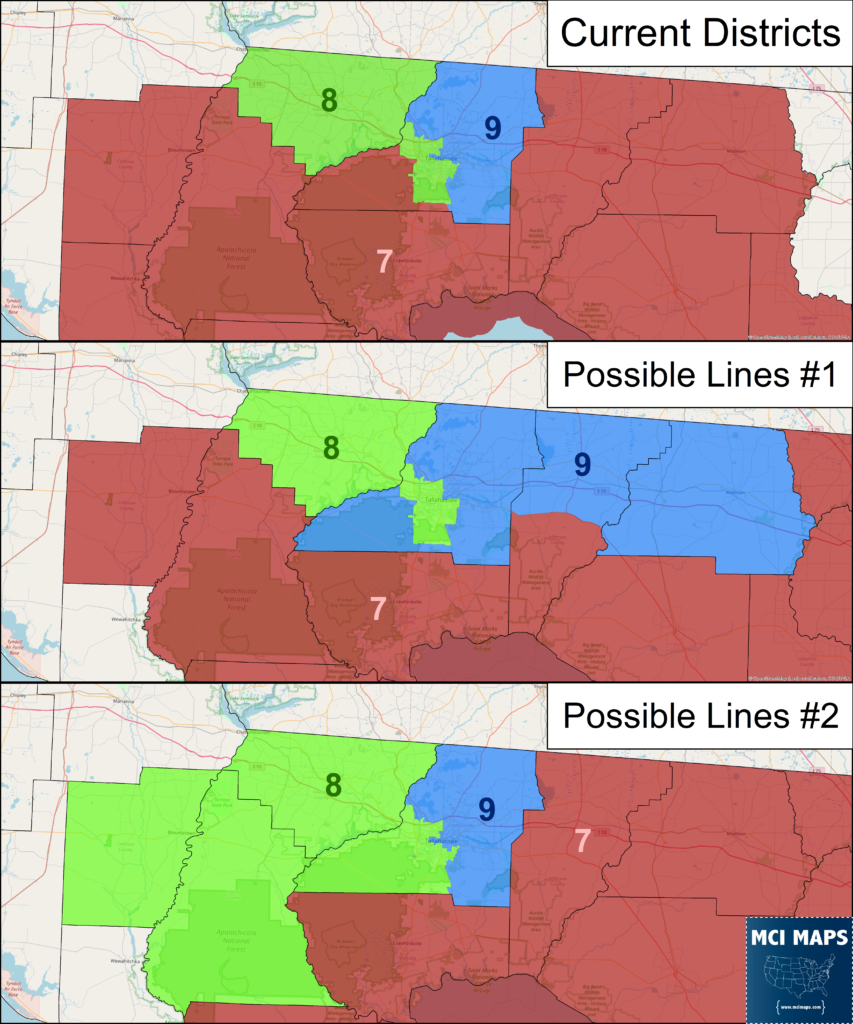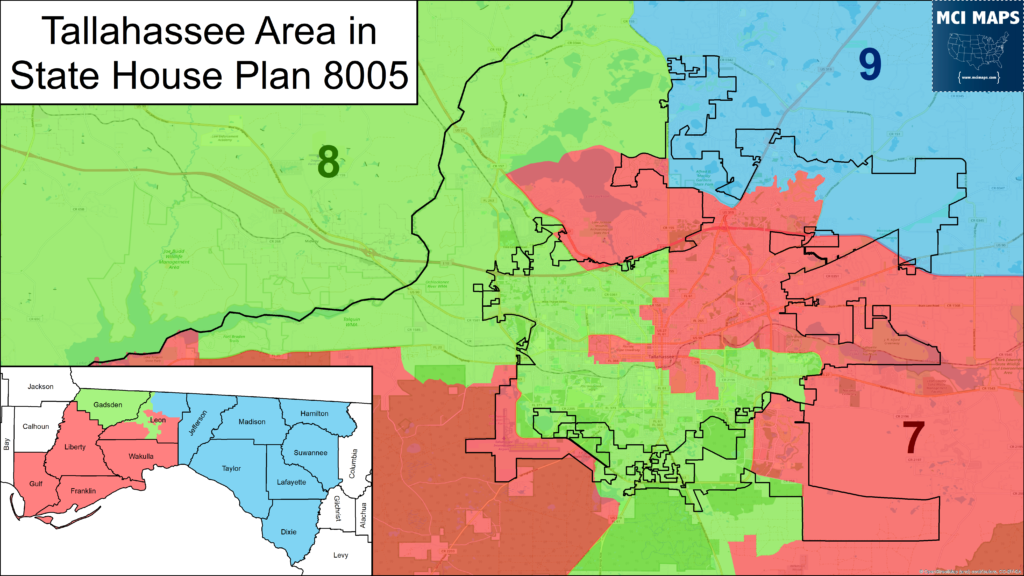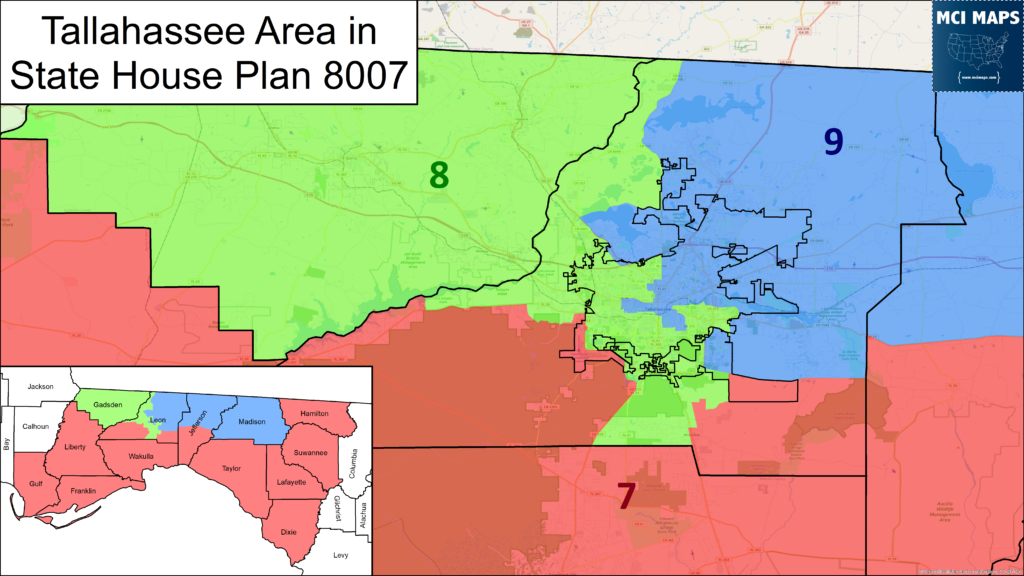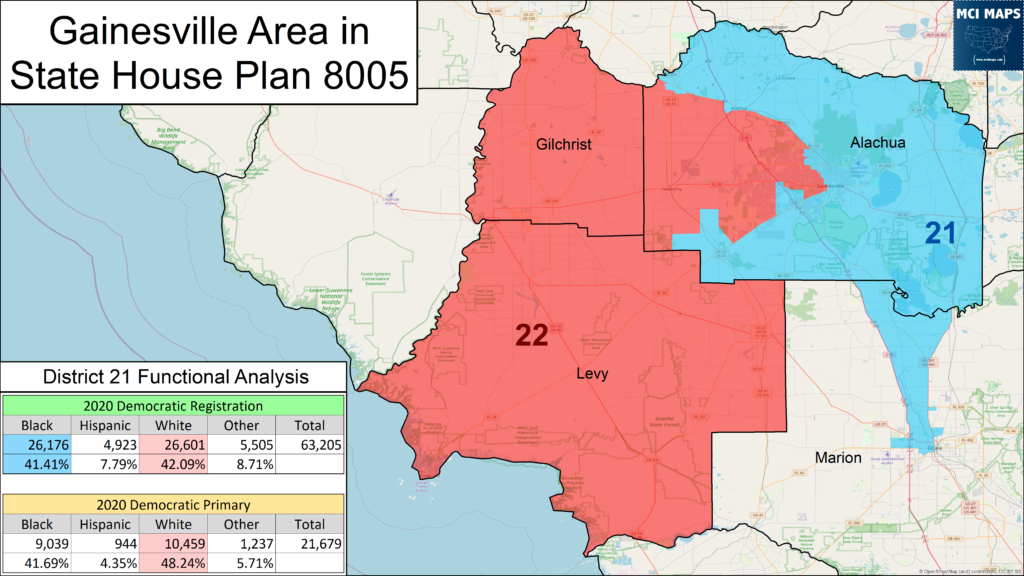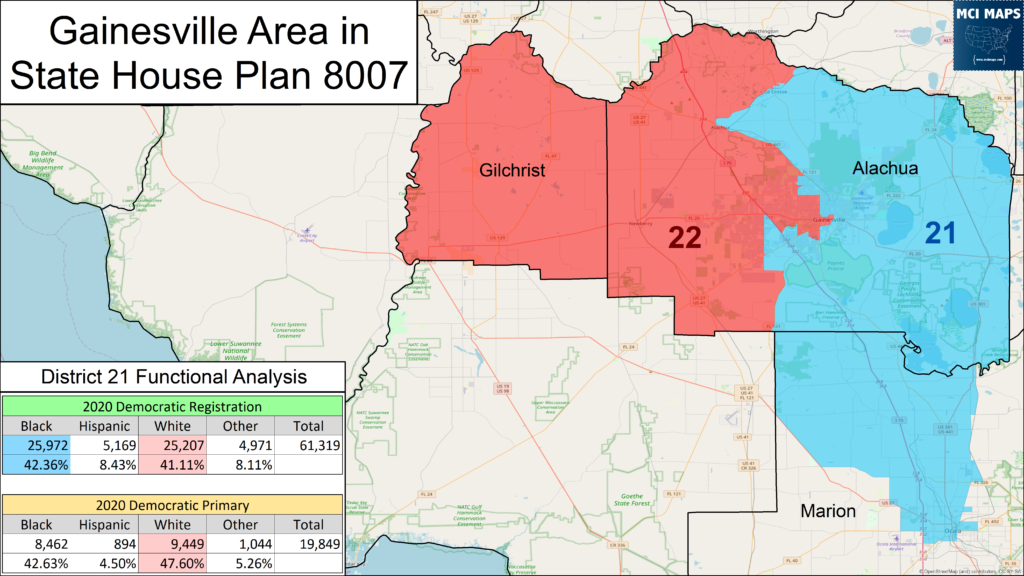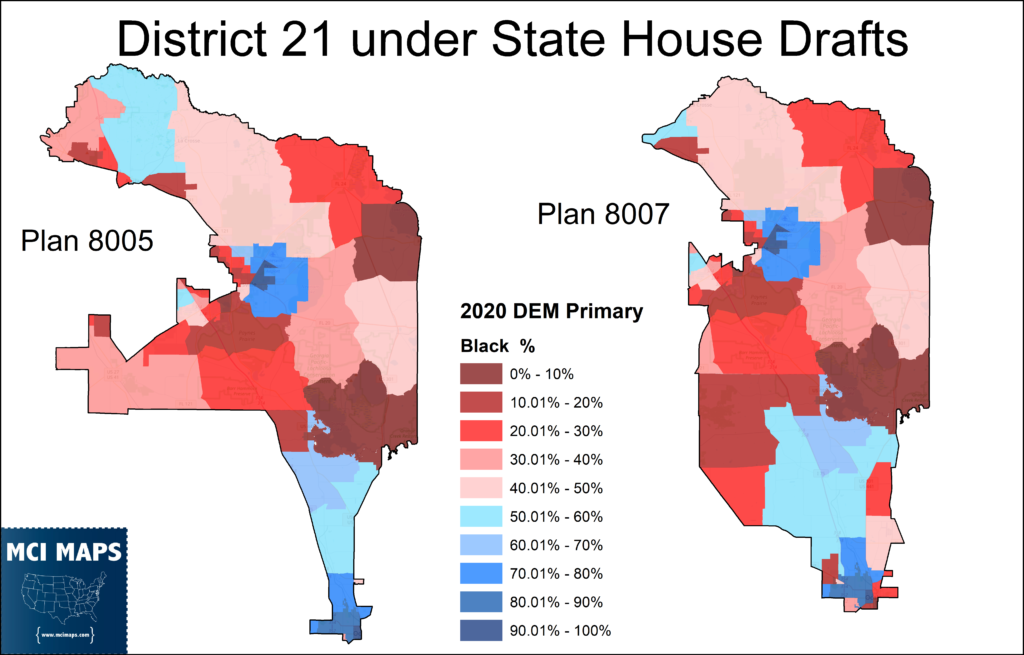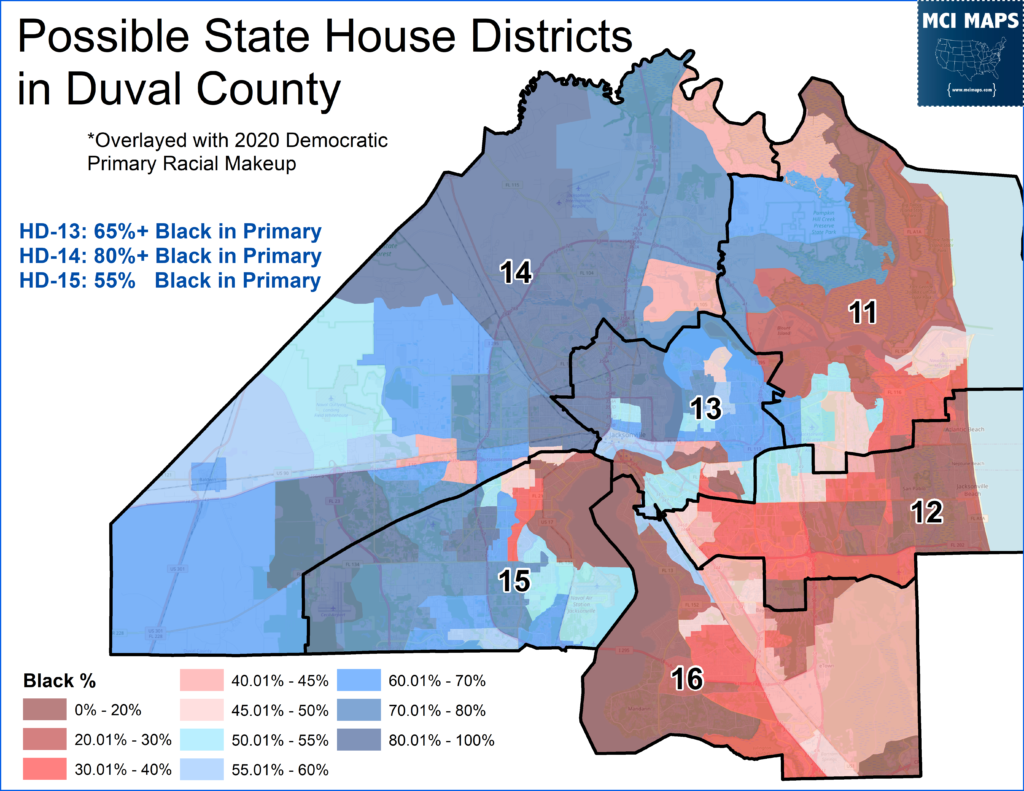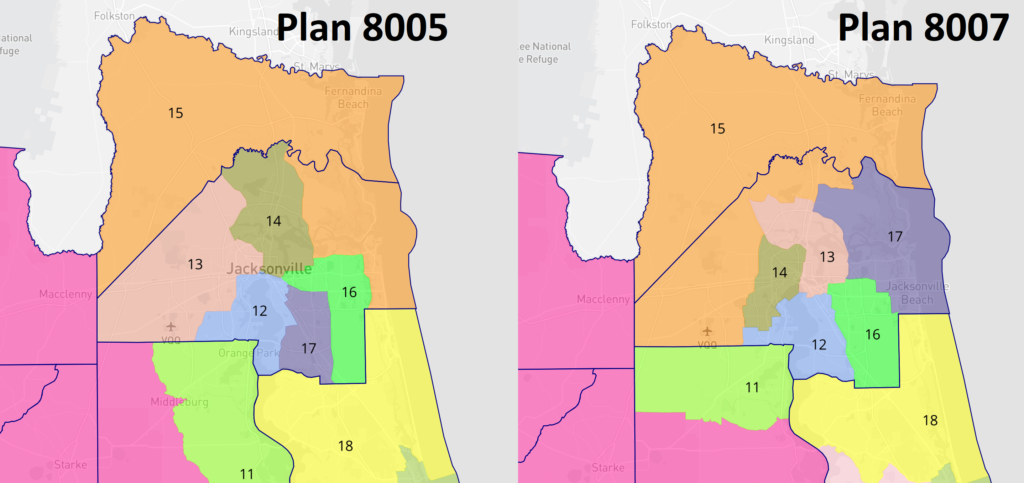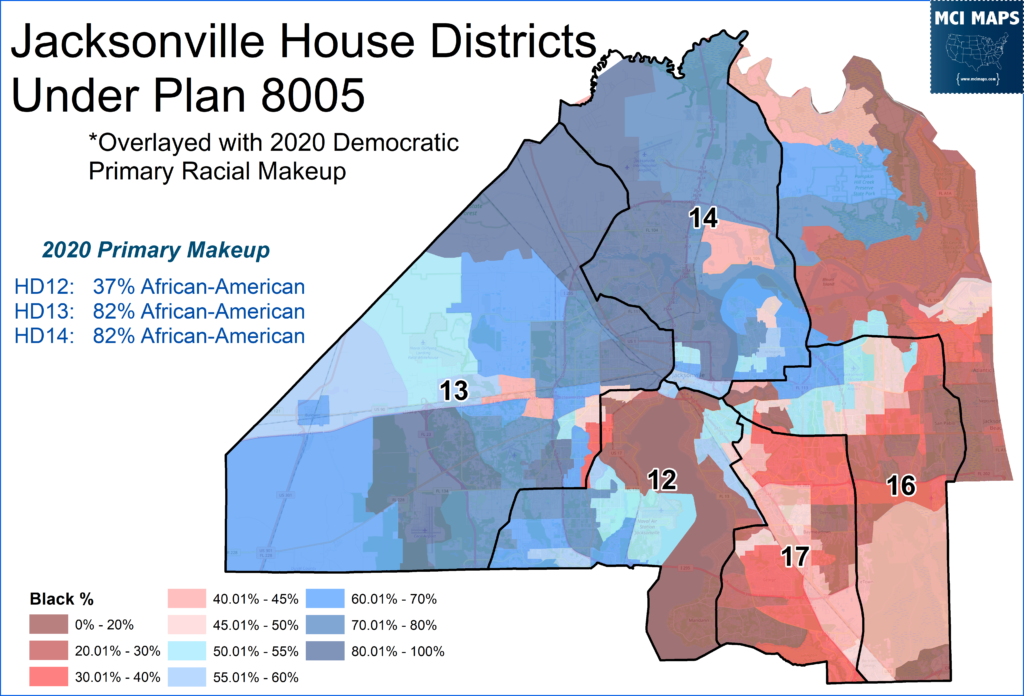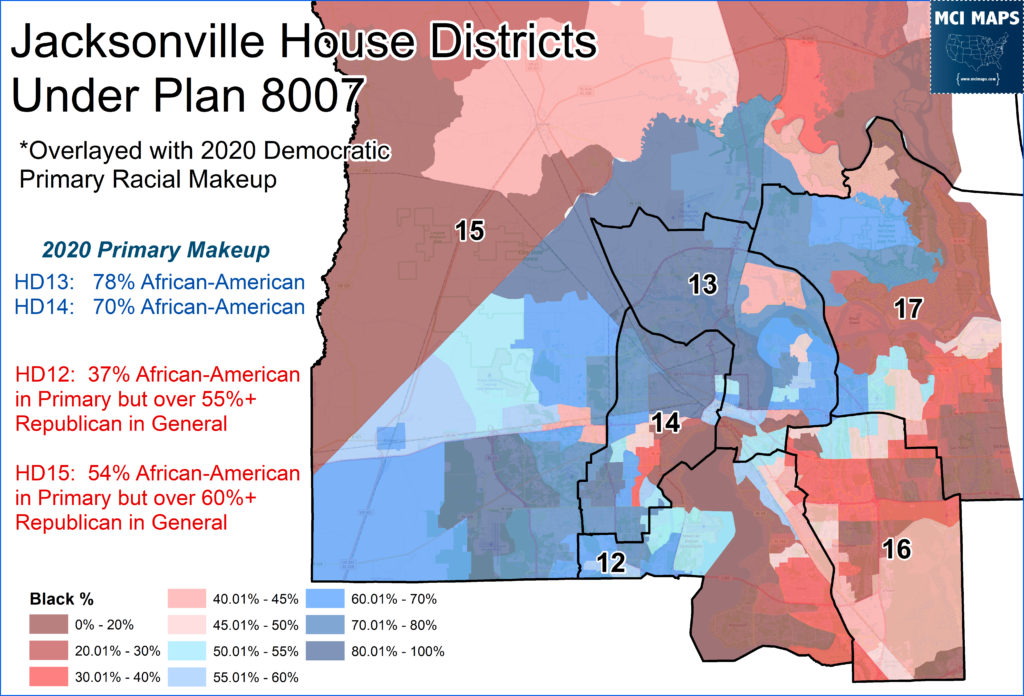This week marks article #7 in my series on redistricting possibilities across Florida. Each week I will look at an area of Florida to discuss redistricting implication.
Series Explainer
The goal of this series is to take a look at different areas in Florida and see how the legislative lines may end up. These articles will focus on how lawmakers may draw districts to accommodate changing populations. I will talk about different areas, what mandates (namely minority representation) they have, and what might need to happen due to population changes. I will also, at times, examine what efforts to gerrymander a region will look like. After the 2012 gerrymandering was discovered by a Florida Court, I believe it is appropriate to treat legislative intent with some healthy skepticism. “Fair maps” can – at times – be in the eye of the beholder, but the goal will be to identify what would likely be partisan decisions by lawmakers.
I highly recommending reading my History of Florida Redistricting series – as many mandates and norms we have in our maps are a product of that history. Prerequisite reading is absolutely my 2022 Primer Article – which covers which districts are under-populated and what the racial benchmarks are.
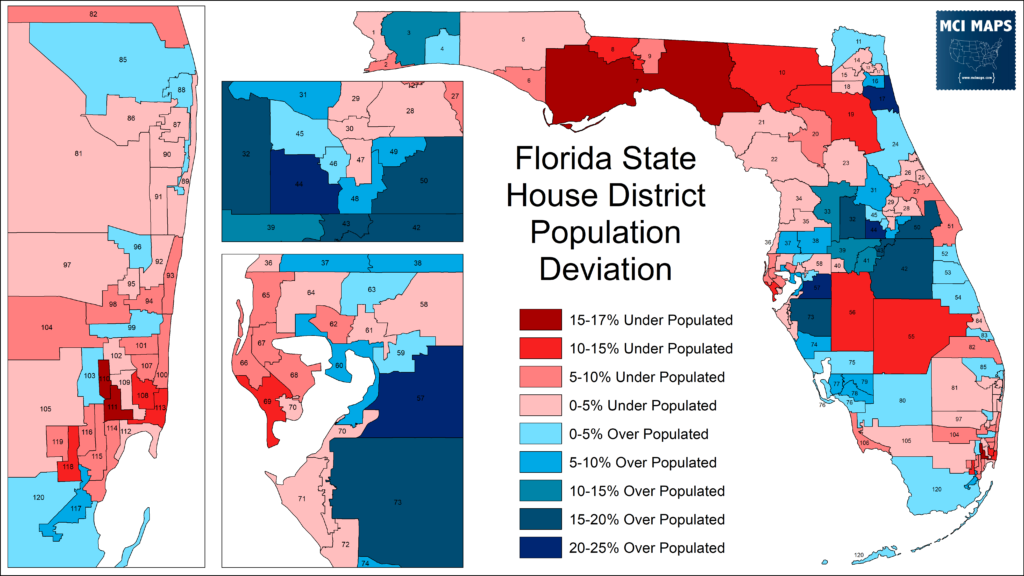
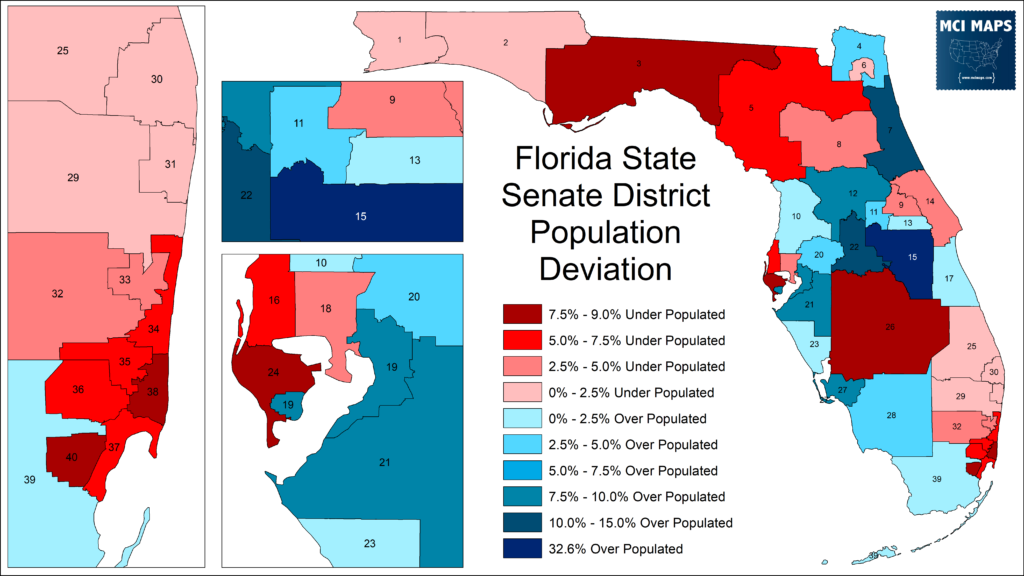
The full spreadsheet of district stats – including population and racial makeup – can be found here.
An important glossary to remember:
- BVAP = Black Voting-Age population
- HVAP = Hispanic Voting-Age Population
- Functional Analysis = using political turnout data to confirm minority performance in a district. Utilizing both general election and primary election performance for parties and racial groups.
Lets continue this series by looking at the southeast Florida state senate region!
Update! State House Maps Released
Over the last few weeks, we started seeing redistricting drafts emerge from the state senate. On November 29th, the State House released their first draft maps. I discussed the gerrymandering of the Congressional map in this substack post. For this article, we are discussing the state house plans.
Both plans give the GOP a decent advantage in the chamber. Biden won just 50/120 districts in plan 8005, while he got 52/120 in plan 8007.
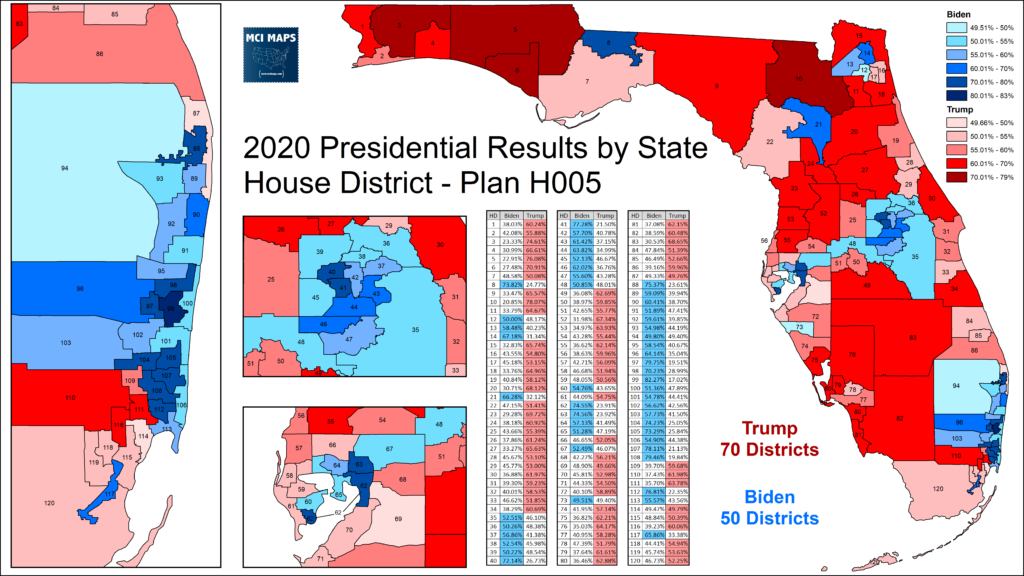
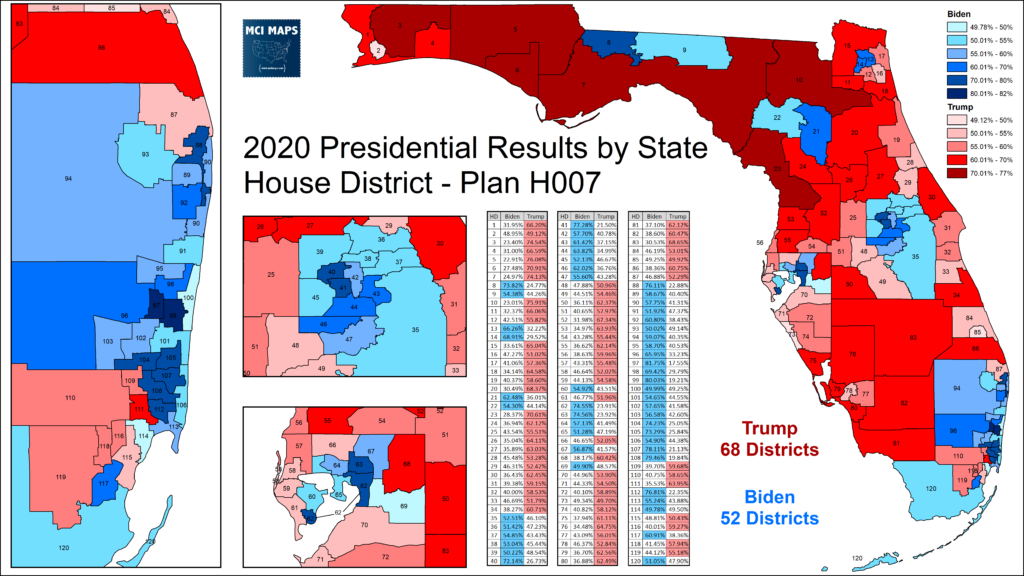
Biden did especially poor due to his collapse with Hispanic voters. In the races for Governor and Senator from 2018, the breakdowns were closer.
The plans do give Republicans key advantages, namely with Democrats winning several very narrow races while the GOP has fewer “at risk” seats. Democrats do get new districts, especially around Orlando, thanks to the massive population growth in the region.
Plan 8005 is a more aggressive plan in different parts of the state; though there is some trade-off in different regions. I will be going through multiple regions of the state over multiple articles; examining what these drafts (and any future drafts) are doing.
This article will cover the plans for North Florida.
Cracking North Florida
Dividing Tallahassee Three Ways
In my previous article on North Florida districts, I talked about the problems the panhandle was facing. Population losses and/or slow growth meant that many of the districts would need to expand to get the right population numbers. I speculated on a few different ways the districts around Tallahassee could expand. The area currently has two Representatives, with a rural district surrounding the area. I looked at two ways to get populations equaled. One involved HD8, an African-American district, expanding west. The other plan involves HD9, which represents the white suburbs of Tallahassee, going east.
Both scenarios force a shotgun marriage of rural and urban interests. In reshaping HD8, I made sure to not hurt or diminish the black population. Read more about that in the article.
When the State House released its drafts, I was stunned to see Tallahassee divided into three districts. Plan 8005, by far the more aggressive GOP gerrymander, cuts middle Tallahassee into HD7 and northern Tallahassee into HD9. As a result, it creates two Republican districts, leaving just HD8 as Democratic.
House District 9 has been a fool’s gold for Republicans for years. Repeated attempts to win the seat have failed. Now the party is deciding to simply cut up the city and divide it across the rural landscape. While HD7 would be at least in play, with Biden narrowly losing it and Gillum narrowly carrying it, it’s a far cry from the reliable blue seat that HD9 was. HD7 goes all the way from Gulf County and loops around HD8 to grab much of middle Leon County. Tallahassee is treated as a “donor county” – just used to divvy up population while letting the GOP-heavy rural counties control the votes.
Now House Plan 8007 is much better for Tallahassee. This plan does what I offered in my original article – moving HD9 further east. The core nature of HD7 remains as a rural-heavy district, while HD9 follows from Tallahassee to Madison via the I-10 and State Road 90; similar to Congressional District 5.
This is obviously a much better plan than 8005.
We can only hope this layout, and basic sanity, win the day.
Gainesville Divide
How to divide the Gainesville area is a tricky issue. The area has had an African-American district that goes from Gainesville to Ocala for decades. The district isn’t majority black, but is a black-access seat via its Democratic primary. The district, now-HD20 but numbered HD21 in the drafts, has to get larger. Adding voters from Marion County or Alachua will bleach the seat a bit. The partisan issue becomes where does HD21 expand. Republican mapmakers would prefer it expand to take more of Democratic Gainesville, leaving the neighbor district more GOP friendly. If you took more from Marion, then more Democrats flow into the neighboring district. This back-and-forth is the difference between one or two Democratic seats in the area. Each house draft offers one of those options.
Plan 8005 employs the option of HD21 taking more Gainesville precincts. As a result, HD22 must expand into deep-red Levy. As a result, only HD21 is Democratic. It has a 42% black primary, 48% white.
Plan 8007 takes more from Marion County, and hence HD22 only has to go to Gilchrist. The result is a Biden+10 win in HD22. The primary makeup for HD21 is almost the same, but a bit better for African-Americans. The issue here is just population needs. The district can only expand into whiter territory.
The precinct-level makeup of the 2020 Democratic primary within each plan can be seen below.
There are potentially some tweaks and moves that could shift the numbers a bit. These two plans, however, represent the debate about Gainesville. Where does HD21 expand into? And is that decision because of partisan consideration?
Short-Circuiting Jacksonville Growth
In my first North Florida article, I showed that a third African-American seat could be drawn in the Jacksonville region. It was possible to draw an HD15 that was solidly Democratic and 55% black in a primary. I did speculate that the GOP was unlikely to support such a move.
I was right. Both plans are below. Both make no effort to create a third minority district.
Let’s start with plan 8005. It maintains two African-American districts. HD13 is 50% BVAP and HD14 is 54% BVAP. Both are overwhelmingly black in a Democratic primary; and deep blue seats. HD12 is a swing seat, narrowly backing Biden. It’s got a 37% black Democratic primary, which isn’t bad. However, this is still a clear effort to pack African-American voters into two districts as much as possible.
Plan 8007 is actually worse in Jacksonville. This is a much more aggressive, but also outright bizarre, plan. The plan lumps in many African-American voters into HD15, which includes all of Nassau County. HD14 takes white/liberal Riverside; leaving HD12 to be a steady GOP seat. This plan packs Democratic voters as much as possible and then feeds another batch to HD15.
These plans are outright insulting. They aim to short-circuit the Democratic and non-white growth in the area; cracking and packing wherever possible.
Conclusions
Of the two plans, 8005 is definitely more GOP-leaning. The efforts to split Tallahassee three ways are the type of gerrymander you’d see in a pre-Fair Districts era. Jacksonville’s demographic growth is not respected by either plan. The goal was clear for both of these plans, limit Democratic districts in North Florida.

